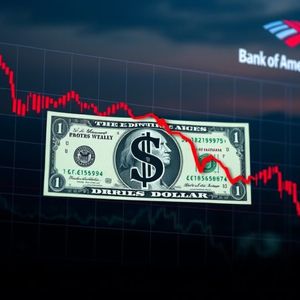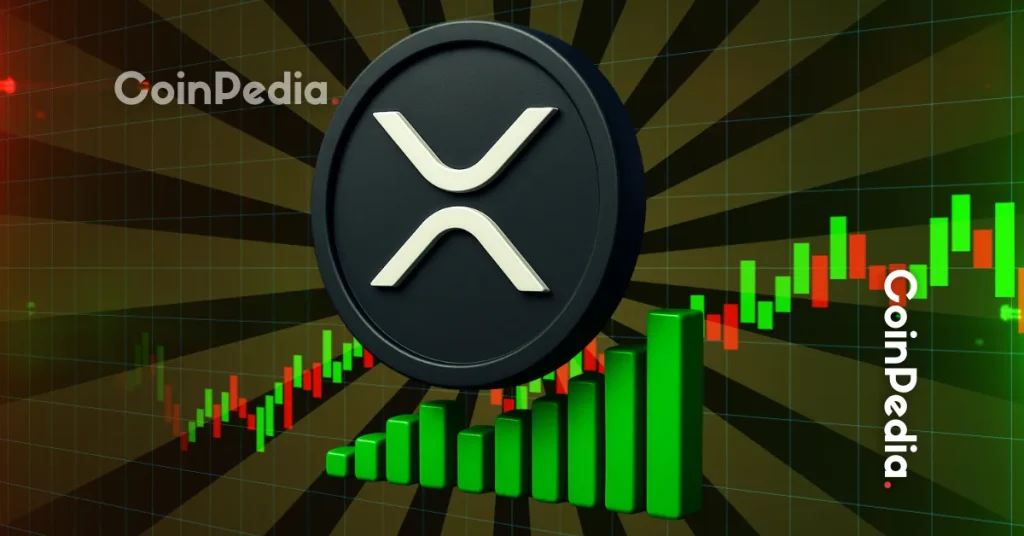BitcoinWorld USD Trend: Unveiling a Bearish Shift After Payroll Revisions The financial world is abuzz with a significant forecast from Bank of America, signaling a potential shift in the global currency landscape. For those deeply invested in cryptocurrencies, understanding broader macroeconomic shifts, particularly concerning the USD trend , is crucial as they often influence digital asset markets. Bank of America’s latest analysis points to a growing bearish sentiment for the US Dollar, a development that could have wide-ranging implications for investors and economies worldwide. This shift is primarily attributed to recent, crucial payroll revisions, which have painted a different picture of the US labor market than previously understood. What Does a Bearish USD Trend Signify? A bearish USD trend indicates that the US Dollar is expected to weaken against other major global currencies. This weakening can be driven by several factors, including changes in interest rate expectations, economic performance, geopolitical events, and, as in this case, revisions to key economic indicators. When the USD weakens, it can make US exports cheaper, potentially boosting the economy, but it also makes imports more expensive, which could contribute to inflation. For cryptocurrency holders, a weaker dollar can sometimes be perceived as a positive, as it might encourage investors to seek alternative assets like Bitcoin and other digital currencies as a store of value or a hedge against traditional currency devaluation. It signals a potential shift in capital flows and investor confidence. Impact on Trade: A weaker dollar makes US goods more competitive internationally. Inflation Concerns: Imported goods become more expensive, potentially fueling domestic inflation. Investment Flows: Capital may flow out of dollar-denominated assets into other currencies or alternative investments. Commodity Prices: Commodities priced in USD often become cheaper for foreign buyers, potentially driving up their prices. The Pivotal Role of Payroll Revisions At the heart of Bank of America’s forecast are the recent payroll revisions . But what exactly are these revisions, and why do they hold such sway over currency markets? Government agencies, like the Bureau of Labor Statistics (BLS) in the US, initially release preliminary employment data. Over time, as more comprehensive information becomes available, these figures are often revised. These revisions can be upward or downward, and their magnitude can significantly alter the perceived health of the economy. Historically, significant downward revisions to non-farm payrolls suggest that the labor market was not as robust as initially believed. This implies slower job growth, potentially less consumer spending, and a weaker economic outlook. Such a scenario can lead central banks, like the Federal Reserve, to adopt a more dovish monetary policy stance, meaning they might be less inclined to raise interest rates or even consider cuts. Lower interest rates typically reduce the attractiveness of a currency, contributing to a bearish outlook. Why do payroll revisions matter for the USD? Payroll data is a primary indicator of economic health. When initial strong numbers are revised downwards, it changes the narrative about economic momentum. For currency traders and large institutions like Bank of America, these revisions are not just statistical adjustments; they are critical signals that can alter their fundamental view of a currency’s trajectory. A consistently softer labor market, indicated by these revisions, could signal: Reduced inflationary pressures, giving the Fed less reason to maintain high interest rates. Slower economic growth, diminishing the appeal of the US as an investment destination. A shift in market expectations regarding future monetary policy, directly impacting the USD’s value. Bank of America’s Perspective and Forex Market Implications Bank of America’s detailed analysis goes beyond simply observing the revised numbers. Their strategists are interpreting these adjustments as a clear indication of underlying weakness in the US economy that was previously masked. This forms the basis for their projection of a sustained bearish USD trend . Their research suggests that the labor market, a cornerstone of US economic strength, is decelerating more rapidly than official reports initially indicated. This perspective carries significant weight given BoA’s prominence in global financial markets. What does this mean for the Forex market ? The foreign exchange market is where currencies are traded, and it is highly sensitive to economic data and central bank policy expectations. If Bank of America’s view gains traction among other major financial institutions, we could see a broader unwinding of long USD positions and a strengthening of other major currencies like the Euro, Japanese Yen, or even emerging market currencies. Traders will be keenly watching for further economic indicators to confirm this outlook, and any deviation could lead to volatile movements. How the Forex Market Reacts: Factor Impact on USD Forex Market Reaction Lower Interest Rate Expectations Decreased attractiveness Sell-off against higher-yielding currencies Slower Economic Growth Reduced investment appeal Capital outflow, demand for other safe-haven assets Increased Trade Deficit More USD sold to buy imports Downward pressure on USD exchange rates Connecting the Dots: Broader Economic Data and USD Strength While payroll revisions are a direct catalyst for Bank of America’s outlook, it’s essential to view them within the context of broader economic data . The strength of any currency is a reflection of its underlying economy’s health, its monetary policy, and its relative performance against other major economies. Beyond employment figures, indicators such as inflation rates, consumer spending, manufacturing output, and retail sales all contribute to the overall economic picture. If these indicators also show signs of weakening, they would reinforce the bearish sentiment for the USD. The Federal Reserve’s response to this evolving economic landscape is paramount. If economic data, including revised payrolls, consistently suggests a cooling economy and receding inflationary pressures, the Fed might be compelled to pivot towards interest rate cuts sooner than anticipated. This monetary policy shift would further underscore the bearish outlook for the dollar, as lower rates typically diminish a currency’s yield advantage. Investors are closely monitoring Fed officials’ statements for any hints of such a change in policy direction, which would inevitably ripple through global markets, including the crypto space. Key Economic Indicators to Watch: Inflation Reports: CPI and PCE data indicate price stability. Retail Sales: A gauge of consumer spending, a major component of GDP. Manufacturing PMIs: Reflect the health of the industrial sector. Federal Reserve Commentary: Speeches and minutes provide insights into monetary policy. Navigating the Current USD Trend: What Does it Mean for Investors? For investors, understanding and adapting to the emerging USD trend is critical. A weaker dollar can present both challenges and opportunities across various asset classes. In the bond market, a declining dollar might reduce the returns for foreign investors holding US Treasury bonds, potentially leading to outflows. For equity investors, companies with significant international revenues might benefit from a weaker dollar as their foreign earnings translate into more dollars. Conversely, companies relying heavily on imports might face higher costs. In the commodity markets, a weaker dollar typically makes dollar-denominated commodities like gold and oil more affordable for holders of other currencies, potentially driving up their prices. For cryptocurrency investors, a bearish USD trend could be a double-edged sword. While some might view Bitcoin as a hedge against fiat currency depreciation, a general risk-off sentiment in traditional markets could also drag down digital assets. Therefore, a nuanced approach is required, focusing on diversification and careful risk management. Actionable Insights for Investors: Diversify Portfolios: Consider exposure to non-USD denominated assets or currencies. Re-evaluate Commodity Holdings: Assess how a weaker dollar might impact your commodity investments. Monitor Fed Policy Closely: Anticipate potential interest rate changes and their market effects. Consider Export-Oriented Stocks: Companies that earn revenue internationally may benefit. Review Cryptocurrency Strategies: Understand how a weaker dollar might influence crypto demand and sentiment. Conclusion: A Shifting Landscape Demands Vigilance Bank of America’s warning of a looming bearish USD trend , largely triggered by significant payroll revisions , marks a crucial juncture for global financial markets. This forecast underscores the profound impact that seemingly technical adjustments in economic data can have on major currency valuations and the broader investment landscape. As the Forex market braces for potential shifts, investors must remain vigilant, adapting their strategies to navigate the complexities of a weakening dollar. Whether through diversification, careful asset allocation, or closely monitoring central bank signals, understanding this evolving USD trend is paramount for safeguarding and growing wealth in an interconnected global economy. To learn more about the latest Forex market trends, explore our article on key developments shaping the US Dollar and market sentiment. This post USD Trend: Unveiling a Bearish Shift After Payroll Revisions first appeared on BitcoinWorld and is written by Editorial Team














